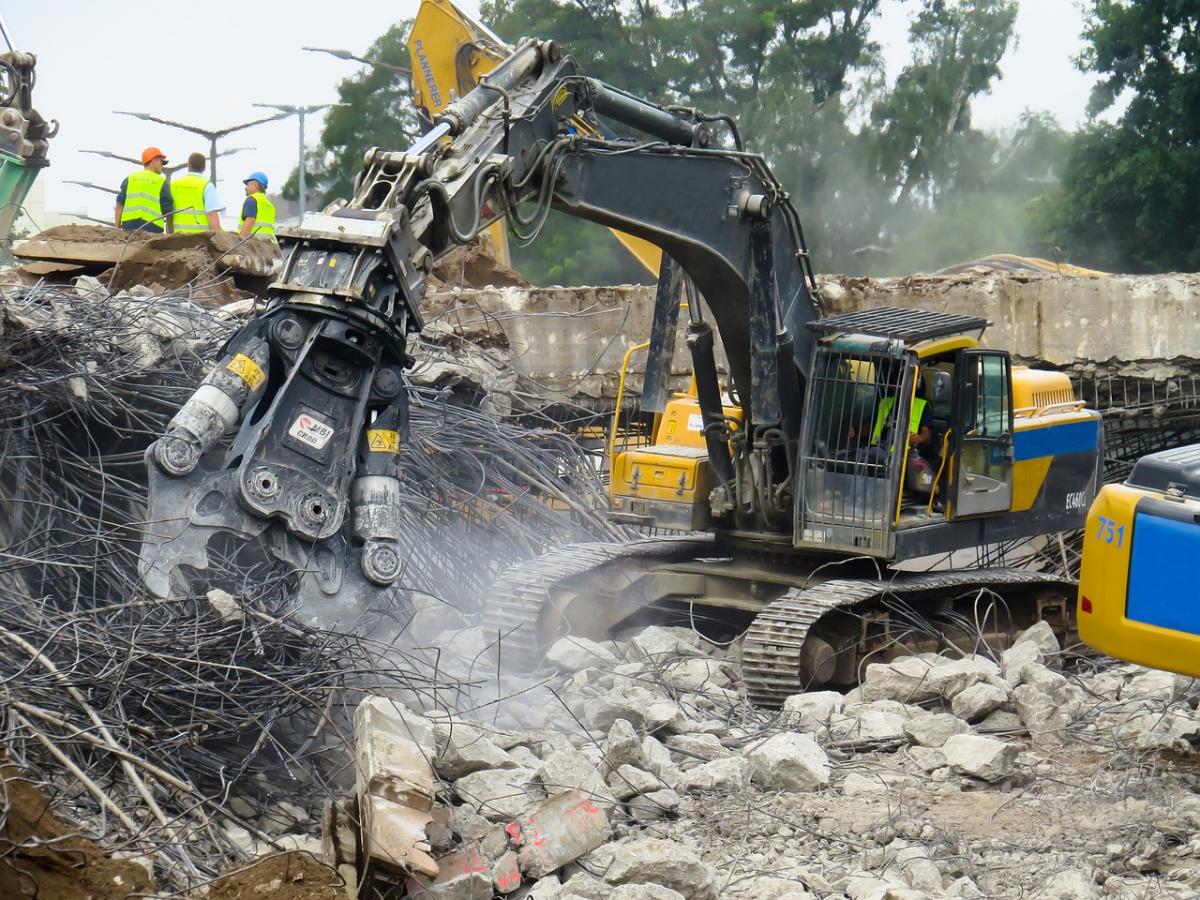PCBs in Building Demolition

*MRP 3.0 requires that Permittees begin implementing updated PCBs/Demolition Program Enhancements no later than July 1, 2023*
Polychlorinated Biphenyls (PCBs) are hazardous man-made chemicals that were once commonly used in building construction. Even though the U.S. banned their production in 1979, PCBs continue to leave a "legacy" of toxicity in our communities today. PCBs have been found at high levels in certain fish throughout San Francisco Bay and the Delta, posing a serious health risk to people who eat certain local fish.
Stormwater runoff is considered a major pathway for PCBs to pollute our waters. One way that Contra Costa communities can keep PCBs from reaching our waterways is to manage materials and wastes during building demolition.
In older buildings, PCBs can usually be found in the following materials:
- Caulking (sealant, plaster)
- Thermal insulation
- Fiberglass insulation
- Adhesives/mastic
- Paint
- Exterior building materials, i.e. caulks and roofing materials
- Rubber gaskets
To protect public health and safety, the San Francisco Bay Area municipal stormwater permit requires most Bay Area municipalities to carry out a program to ensure that PCBs from building materials (e.g., legacy caulk) do not enter storm drains during building demolition. Program protocol must be followed prior to issuing a demolition permit for applicable structures, including but not limited to commercial, public, institutional, and industrial buildings that were constructed or remodeled between the years 1950 and 1980.
Exemptions exist for structures that require emergency demolition, single family residential buildings, and wood frame structures. See the Municpal Regional Permit C.12.g. for details.
Quick Links:
- Technical Memo: Construction Site Control Program Enhancement Options for Demolition Sites Subject to the PCBs Management Program - LWA to BAMSC May 2023 (PDF) *New*
- PCBs in Priority Building Materials: Model Screening Assessment Applicant Package - BASMAA Updated May 2023 (PDF) *New*
- Note: The Updated Model Applicant Package and Tehcnical Memo above were approved by the BAMSC Steering Committee at its May 25, 2023 meeting.
- Changes highlighted between 2019 and 2023 versions (PDF) *New*
- November 2019 version (PDF) (Note: Older version)
- PCBs in Building Demolition Status Report 2020 (PDF)
- Learn about PCBs (EPA.gov)
- Pollutants of Concern Commercial/Industrial Inspector Training Material (PDF from basmaa.org)
- Technical Memo to BASMAA Municipal Operations Committee from EOA, January 2011
- Includes industrial and commercial facilities of concern for PCBs and other Pollutants of Concern, as well as Best Management Practices (BMPs)
- This and related documents may be found on the BASMAA website Committees Programs & Projects – Municipal Operations (basmaa.org)
- Guides to Eating Fish in the Bay and Delta (cccleanwater.org)
- Monitoring Activities - Mercury and PCBs (cccleanwater.org)

